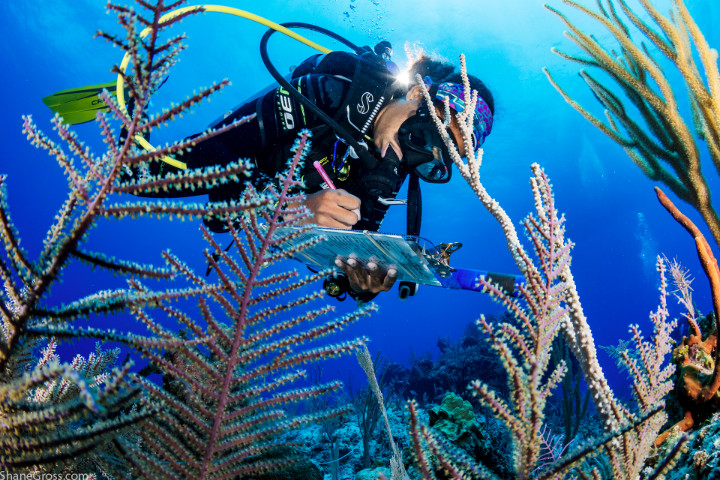|
From:TheBahamasWeekly.com Community
A team of scientists recently completed the Bahamas National Trust’s (BNT) annual survey of the Exuma Cays Land and Sea Park. The team assessed the health and biodiversity of reefs, mangroves and seagrass beds at 10 sites within the park and two outside. Most of the sites have been monitored periodically for 15 years. Led by the BNT’s resident scientist, Dr Craig Dahlgren of the Perry Institute for Marine Science, the monitoring programme was funded by the Global Environment Facility, a partnership of United Nations agencies, multilateral development banks, and non-governmental groups. Dr Dahlgren's is a marine ecologist who studies protected areas and fisheries. The overall goal of the Exuma project is to develop better management and sustainable funding of marine reserves like the Exuma park, while training BNT staff in scientific methods. “Ecological monitoring is essential for the adaptive management of protected areas,” Dr Dahlgren said. “This allows managers to make decisions using the best available information, as new threats and issues emerge. Other members of the team included BNT Science Officers Lindy Knowles and Agnessa Lundy, Brook Gintert of the University of Miami, Allanah Vellacott of the Perry Institute for Marine Science, Shane Gross and Tanya Kamerman of Nova Southeastern University. “It is worth pointing out that fish populations in the Exuma park are healthier than elsewhere,” said Lindy Knowles. "They are found in more numbers and in larger sizes - especially key predators like groupers and snappers - than in nearly all the areas we survey.“ The annual monitoring is designed to assess threats to key habitats within park, identify critical resource thresholds, and measure the impacts of climate change on the natural environment. Surveys of coral predators were completed at several sites, and images were collected for photomosaics of permanent monitoring plots at 10 sites. Telemetry receivers tracking Nassau grouper spawning migrations in the area were checked and replaced if necessary.The receivers are part of Bahamian marine biologist Krista Sherman's research in collaboration with Chicago’s Shedd Aquarium. During the survey, Dr Dahlgren was interviewed by US-based documentary filmmaker Colin Ruggerio, who is producing a film on the Exuma Cays Land and Sea Park The team also met with divers and archaeologists from Texas A&M University who are excavating a 16th century Spanish wreck near Highbourne Cay. It is one of the only early shipwrecks in the New World to have hull structure still intact. “In addition to learning about their project we discussed ways of removing and relocating corals from the reef that has grown on the wreck for the past 500 years,” Dr Dahlgren said. “Often, corals are destroyed when excavating wrecks like this.” The wreck was discovered in 1965 and has been salvaged several times. The ship's identity is unknown, but artefacts have dated tit to between 1500 and 1570. Support for the Exuma park survey was provided by the Disney Conservation Fund, Atlantis Blue Project Foundation, and Allstar Liveaboards. The BNT is a non-governmental, non-profit, membership organisation working to protect Bahamian natural resources by building a network of national parks and promoting environmental stewardship.
|
